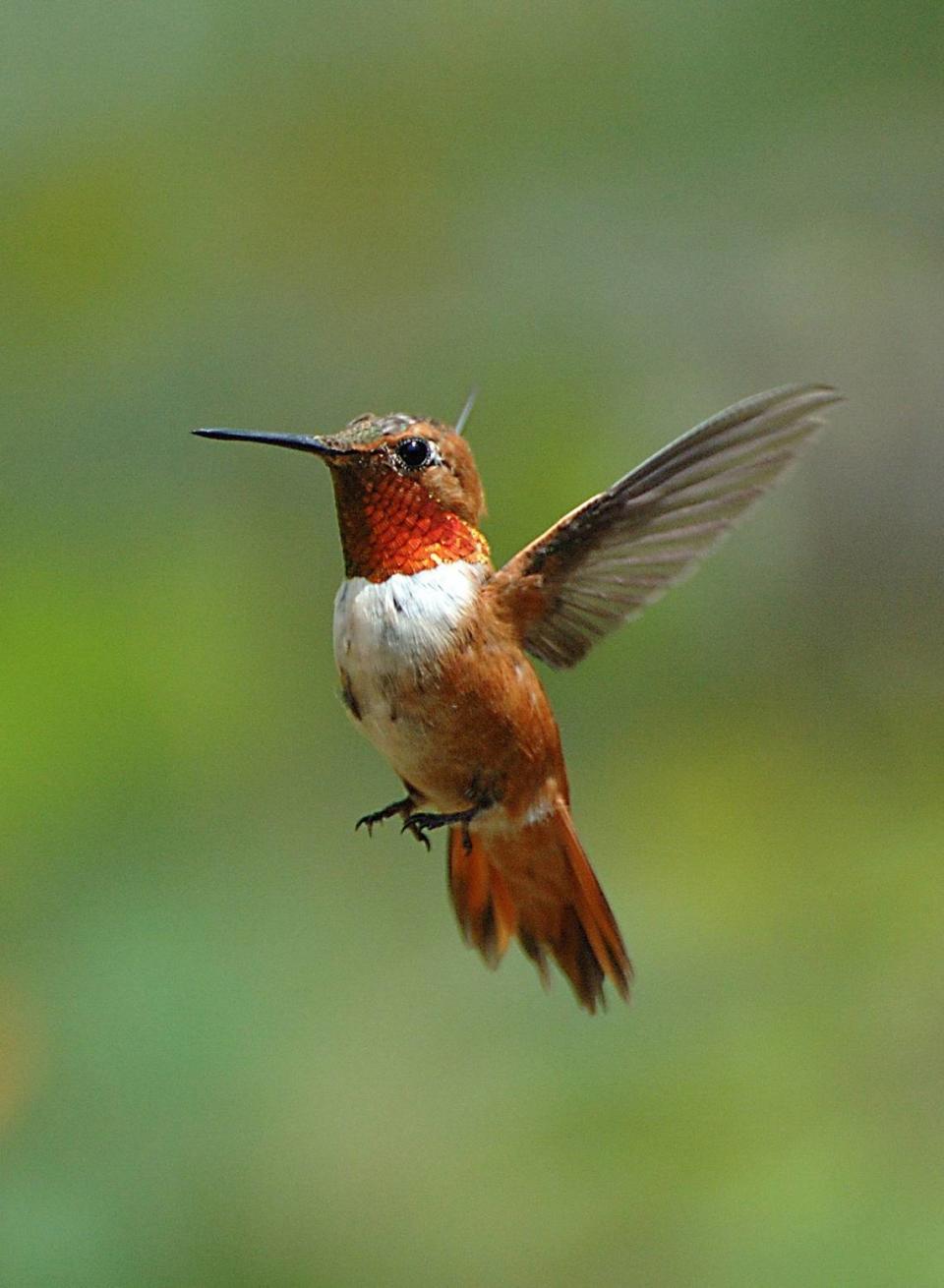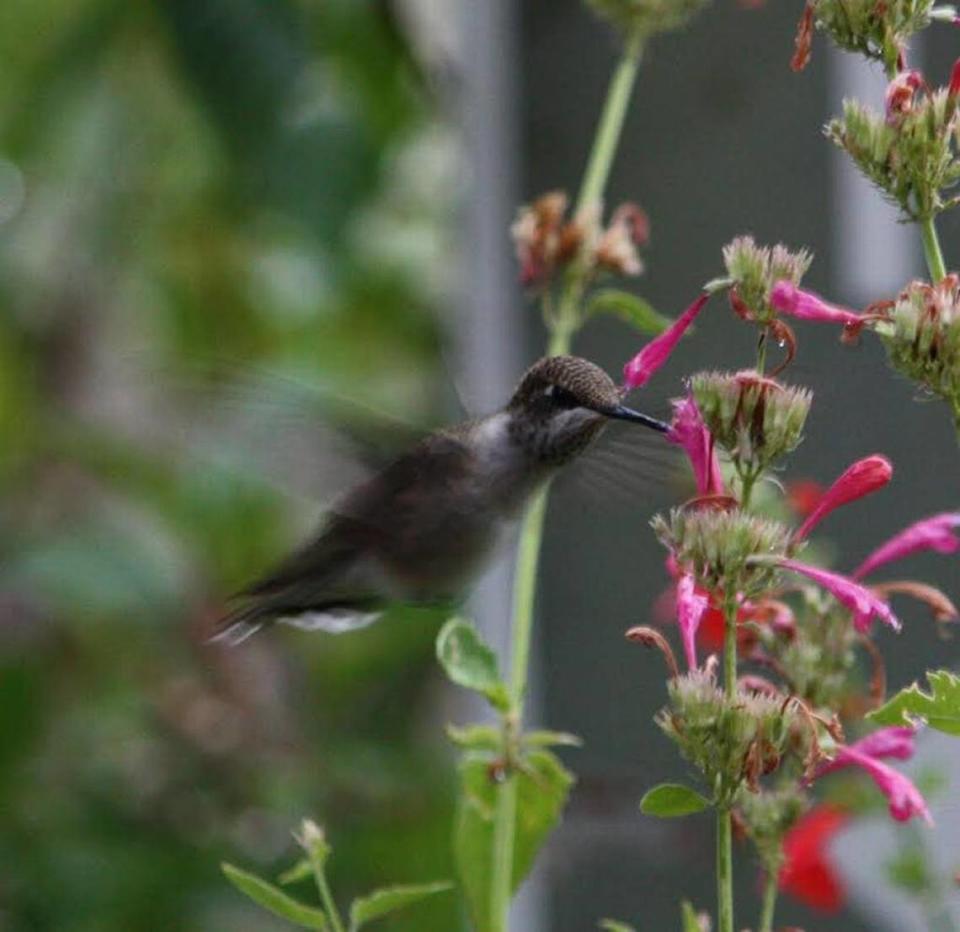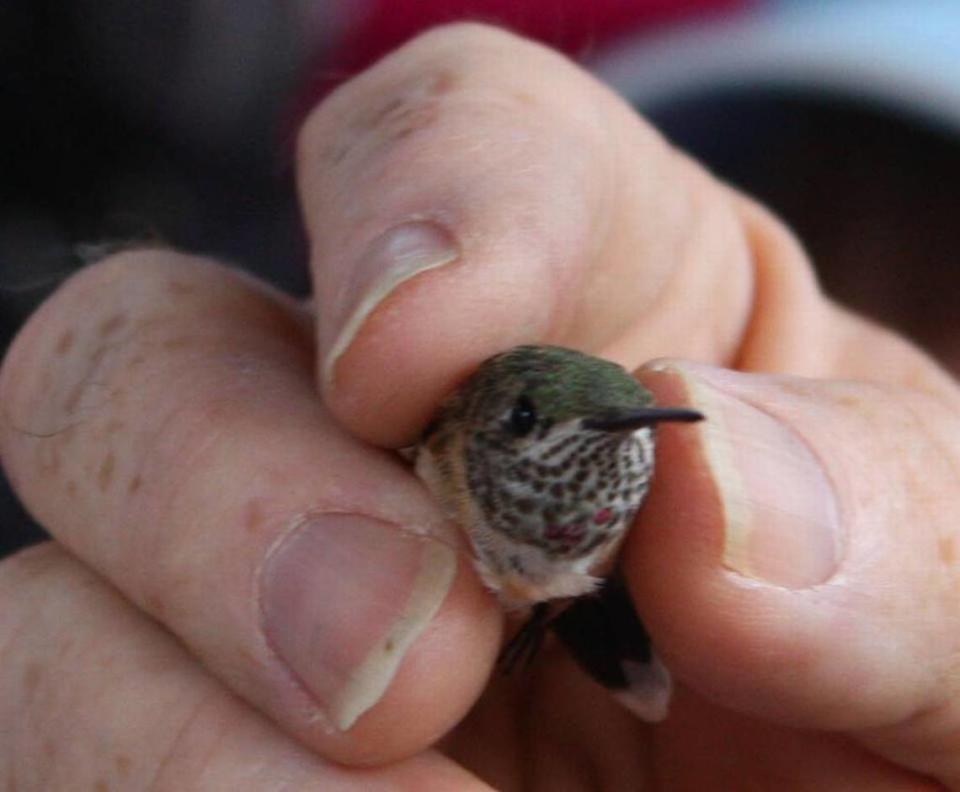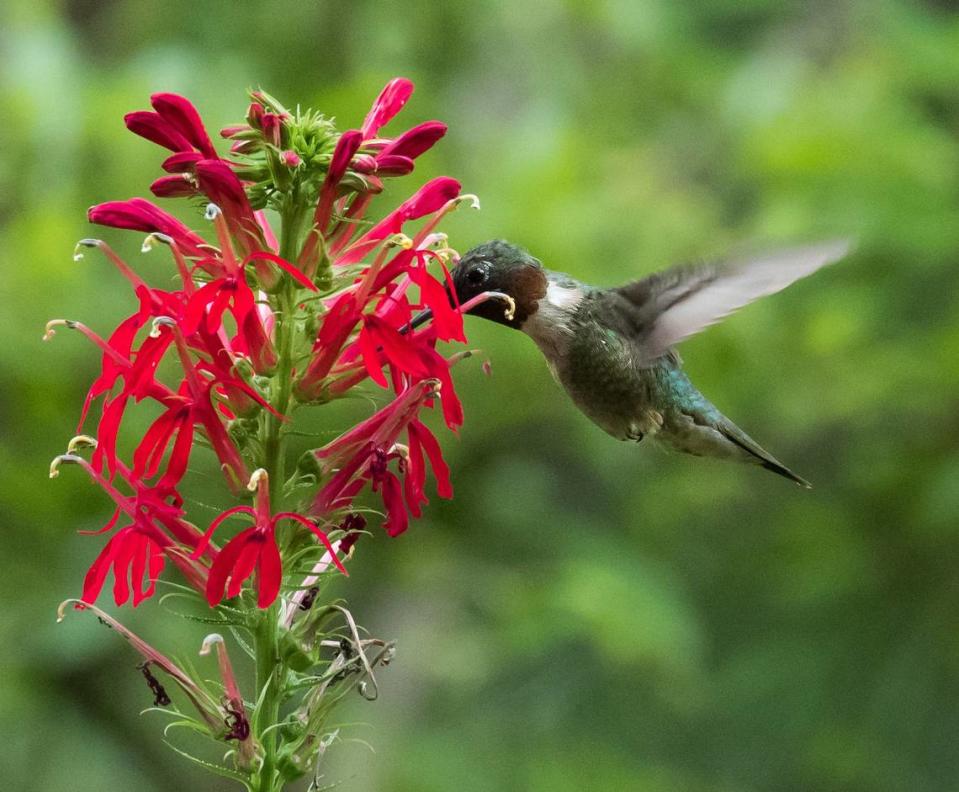NC has among the highest diversity of hummingbirds in the US. Here’s what they look like
Eleven hummingbird species have been spotted in North Carolina, though the Ruby-throated hummingbird — the most prevalent species in the state by a landslide — is the one most of us will see this spring and summer.
The other 10 species are incredibly uncommon, and some of them will only be spotted in the cool weather months. Of those, four are considered pretty rare and the other six are extremely rare.
Some species have only been spotted in our state a handful of times. For instance, the Green Violet-Ear has been seen four or five times, said Susan Campbell, the scientific director at Cape Fear Bird Observatory and a research affiliate focusing on hummingbirds with the NC Museum of Natural Sciences. Campbell has been studying hummingbirds in North Carolina for nearly 30 years.
Even more rare, the Green-breasted Mango has only been recorded in North Carolina once, and it’s unlikely to ever occur here again.
The N&O spoke Campbell and Andrew Farnsworth (a senior research associate with The Cornell Lab of Ornithology specializing in bird migration) to learn about these 10 rare birds.

Hummingbird species in North Carolina
Over 99% of the hummingbirds present in North Carolina in the summertime are Ruby-throated. Since they’re a migrant species, they’re not as prevalent in colder months, Farnsworth said.
It’s not impossible to see other species of hummingbird in the spring and summer. Your best bet would be a Rufous hummingbird, though they are mostly spotted in the cool months.
“It’s not common, but the Rufous is here in some numbers across the state every winter,” Campbell said.
“They are the only ones we really expect to see at all in addition to Ruby-throated birds. Some will show up as early as August, but we get a lot of reports in September and October.”
Here’s how The Cornell Lab of Ornithology describes the Rufous hummingbird:
Adult males are almost entirely orange with bright white chest and some green on the back. Throat is iridescent, and depending on the light, can look anywhere from red to orange to yellow to lime green. On females and immatures, look for orange on sides and tail, which can separate its appearance from Anna’s and Black-chinned.
For photos, videos and more, visit ebird.org/species/rufhum.

Winter NC hummingbird species
During winter periods, if you see a hummingbird, the chances of it being one of the other 10 rare species prevalent in the state is quite a lot higher.
Along with the Rufous hummingbird, the following three have occurred in our region with much lower frequency and much greater rarity in the last 20 to 30 years, Farnsworth said.
Here are those hummingbird species, with descriptions from The Cornell Lab of Ornithology:
1. Allen’s hummingbird: The adult male is compact and stocky with a reddish-orange throat and an orange belly. Female and immature birds are small and compact with a dull, metallic green back and pale coppery flanks.
For photos, videos and more, visit allaboutbirds.org/guide/Allens_Hummingbird.
2. Black-chinned hummingbird: The male is distinctive with a purple and black throat. The female has whitish underparts with almost no buffy tones (perhaps a very light wash on flanks). Tends to pump its tail more than other hummingbirds. Readily comes to sugar water feeders and flower gardens.
For photos, videos and more, visit ebird.org/species/bkchum.

3. Calliope hummingbird: Tiny, compact hummingbird with short tail. Males are distinctive with streaked magenta throats. Females are very similar to several other hummingbird species, especially Broad-tailed. Note small size, short tail with almost no rusty color, finely spotted throat, and thin white line above the base of the bill.
For photos, videos and more, visit ebird.org/species/calhum.

There are an additional six species that are even more rare. These are:
Anna’s hummingbird
Broad-billed hummingbird
Broad-tailed hummingbird
Buff-bellied hummingbird
Green-breasted Mango hummingbird
Green Violet-ear hummingbird
(To see images of any of these hummingbirds, visit eBird.com and search the name of the hummingbird you wish to explore.)
One of the rarest hummingbirds spotted near Charlotte
A hybrid Allen’s-Anna’s hummingbird was spotted at a feeder in Concord outside Charlotte last year, Campbell said.
It’s one of the rarest birds to ever show up in North Carolina, even more rare than the Green-breasted Mango.
“We were fortunate to see it because of the dedicated birders in our state who spotted it and shared it with us so we can band it. If it didn’t have such vibrant plumage, we might not have known just what it was.
“We knew it was a one-off from photos, but we couldn’t identify the bird until it was in our hands,” she said.

How to identify a Ruby-throated hummingbird
Here’s what The Cornell Lab of Ornithology’s “All About Birds” website says about North Carolina’s most prevalent hummingbird.
▪ Size & Shape: The Ruby-throated hummingbird is a small hummingbird with a slender, slightly down-curved bill and fairly short wings that don’t reach all the way to the tail when the bird is sitting.
They’re categorized as being “sparrow-sized” or smaller, measuring seven to nine centimeters long with a wingspan of eight to 11 centimeters.
▪ Color Pattern: Ruby-throated hummingbirds are bright emerald or golden-green on the back and crown, with gray-white underparts. Males have a brilliant iridescent red throat that looks dark when it’s not in good light.
“But they do not all have red throats. In fact, females don’t have any red on them at all. They are only green and white to help them blend into vegetation because of the amount of time they spend at the nest,” Campbell said.
“Only males have iridescent red throats, and you can’t see the red hue on many of the birds. Instead, it can look brown or black, making it hard to identify the bird without binoculars or bright light.”
▪ Behavior: Ruby-throated hummingbirds fly straight and fast but can stop instantly, hover, and adjust their position up, down, or backwards with exquisite control.
They often visit hummingbird feeders and tube-shaped flowers and defend these food sources against others. You may also see them plucking tiny insects from the air or from spider webs.
▪ Habitat: Ruby-throated hummingbirds live in open woodlands, forest edges, meadows, grasslands, parks, gardens and backyards.
(Source: allaboutbirds.org/guide/Ruby-throated_Hummingbird/id)
